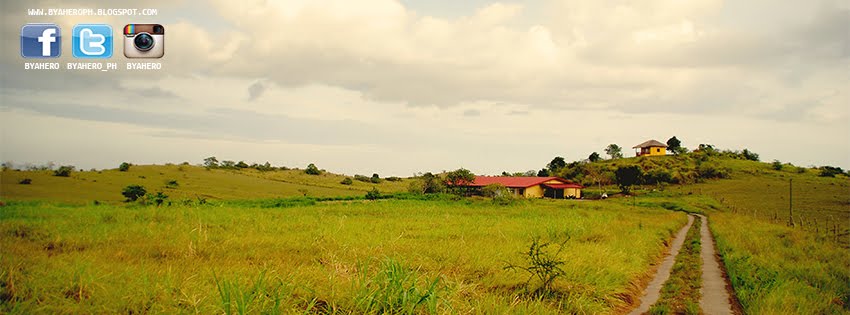The regal statue of Rajah Humabon at Plaza Hamabar - the hospitable Cebuano chieftain who opened the portals of friendship which paved the way for Spain’s lasting legacy in the Philippines.
Tuesday, August 31, 2010
Monday, August 30, 2010
Sunday, August 29, 2010
History of Gumaca
Formerly known as Bumaka (to fight), the present town of Gumaca was a settlement founded at the southern bank of Palanas River in the 14th century by a group of settlers from Borneo and Malay Peninsula.
The earliest known ruler was Lakan Bugtali. His sovereignty extended over the regions bordering Gusuan, now called Lamon Bay, from Gamao point to the North, to the island across the bay or now known as Alabat Islands, to the southwest passing the northeastern part of the present town of Calauag, the source of Talolong, which traverses the town of Lopez, and Pandanan Rivers and on the northwest as far as the upper Kalilayan River. Thus when the first Spaniards arrived in this settlement in 1574 led by Fr. Diego Oropesa, they found a group of barangays with their own culture and government.
From 1574 to 1670 the town of Gumaca was ruled by Spanish Friars. Then from 1671 to 1893 the town was ruled by Spanish and Filipino Gobernadorcillos. From 1893 to 1900 the town executives came to be known as Capitan Municipal and from 1901 the head of the town was elected by the people and came to be known as Presidente Municipal. Later in 1936 this title was change to Municipal Mayors.
It must be noted that the brief history of Gumaca had no mention of any law, decree or Republic Act which created the Municipality and there was no mother municipality where Gumaca came from. As for its daughter towns, Lopez is the most notable among them, being one of the largest and the most progressive in that part of the province.
Thursday, August 26, 2010
Negros Occidental Capitol Park and Lagoon
The Capitol Park and Lagoon is a provincial park located in Bacolod City, Negros Occidental, in the Philippines. One of the features of the park are matching sculptures depicting a woman standing alongside a water buffalo and that of a man pulling another water buffalo. These sculptures are located at the northern and southern ends of the lagoon. These figures were executed by Italian sculpture Francesco Riccardo Monti who also did the sculptures of the Metropolitan Manila Theater and the University of the Philippines - Visayas Iloilo campus. Guillermo Tolentino also contributed as a sculptor of the figures.
Monday, August 23, 2010
Sunday, August 22, 2010
Saturday, August 21, 2010
Subscribe to:
Comments (Atom)
Popular Posts
-
Festivals in Camarines Norte • Pinyasan Festival – Camarines Norte • Rahugan Festival - Basud • Palong Festival - Capalonga • Bant...
-
St. Luke's Medical Center is a tertiary referral hospital located in Bonifacio Global City, Taguig City. It is the most advanced ho...
-
Adlaw Sang Tigbauan October 20 - 25, 2013 Tigbauan, Iloilo
-
GO NEGOSYO FESTIVAL 2013 October 4-6, 2013 Gaisano Grand Atrium, Koronadal City, South Cotabato 3rd Negosyo Festival Schedule...
-
If you're thinking of attending the Catandungan Festival 2013, you're in for a treat. Every year, people flock in the street...
Popular Posts
-
Festivals in Camarines Norte • Pinyasan Festival – Camarines Norte • Rahugan Festival - Basud • Palong Festival - Capalonga • Bant...
-
The town of Tarlac has had a colorful and significant history. Its story may very well be story of Tarlac province itself, which came into b...
-
Adlaw Sang Tigbauan October 20 - 25, 2013 Tigbauan, Iloilo
-
GO NEGOSYO FESTIVAL 2013 October 4-6, 2013 Gaisano Grand Atrium, Koronadal City, South Cotabato 3rd Negosyo Festival Schedule...
-
St. Luke's Medical Center is a tertiary referral hospital located in Bonifacio Global City, Taguig City. It is the most advanced ho...
-
If you're thinking of attending the Catandungan Festival 2013, you're in for a treat. Every year, people flock in the street...
Popular Posts
-
Festivals in Camarines Norte • Pinyasan Festival – Camarines Norte • Rahugan Festival - Basud • Palong Festival - Capalonga • Bant...
-
St. Luke's Medical Center is a tertiary referral hospital located in Bonifacio Global City, Taguig City. It is the most advanced ho...
-
CALENDAR OF FESTIVITIES JANUARY January 1 | NEW YEAR’S DAY (Holiday) January 1 | AGUMAN SANDUK | Minalin, Pampanga Januar...
-
Green Park Resort, Atimonan Quezon RESORTS & HOTELS IN ATIMONAN, QUEZON PROVINCE De Gracia Beach Resort Brgy. Balubad 0923‐7...
-
PHILIPPINE FESTIVALS AND EVENTS JANUARY 2016 January 1 | NEW YEAR’S DAY (Holiday) January 1 | AGUMAN SANDUK | Minalin, Pa...
-
OAK PARK HOTEL & RESIDENCES Padillo Building, Enriquez cor. Hermana Fausta Sts., 4301 Lucena City Phone: (042) 373-6764 or 710-6148 DIAM...
-
The Oriental Legazpi Hotels THE ORIENTAL LEGAZPI (First Class) Sto. Nino Village, Taysan, Legazpi City Tel: (+632) 470 9737 | 404 7501 |...







.jpg)










.jpg)


